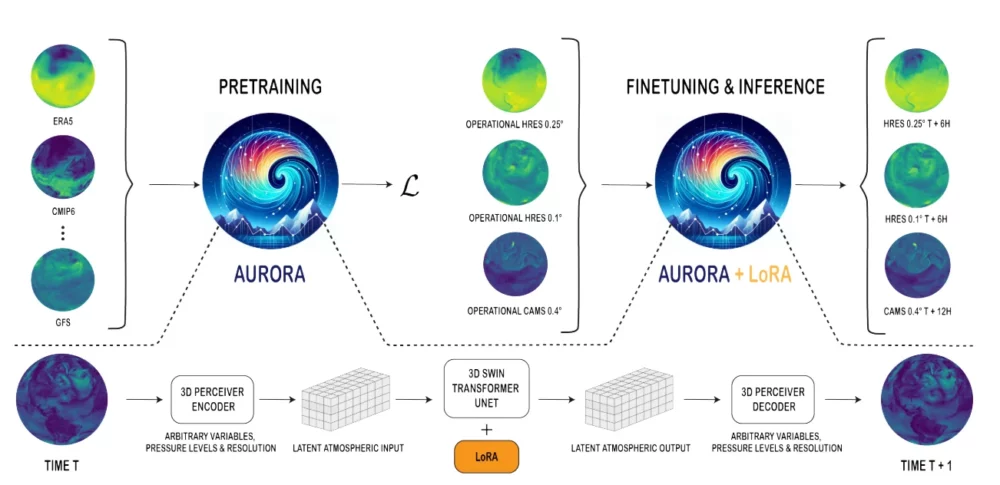Microsoft Aurora AI Model is 5000x Faster Than Supercomputers in Weather Forecasting
 Microsoft’s AI research team has created a new Aurora AI Model for weather forecasting. This is a new 3D AI model, which simulates an atmosphere and can create forecasts that are just as accurate while being much faster than even the best supercomputers that we have. During their research, Aurora generated 5-day global air pollution forecasts in under a minute. This surpasses many state-of-the-art weather simulations. It’s also able to create 10-day high-resolution weather forecasts that outperform leading numerical models across 92% of variables.
Microsoft’s AI research team has created a new Aurora AI Model for weather forecasting. This is a new 3D AI model, which simulates an atmosphere and can create forecasts that are just as accurate while being much faster than even the best supercomputers that we have. During their research, Aurora generated 5-day global air pollution forecasts in under a minute. This surpasses many state-of-the-art weather simulations. It’s also able to create 10-day high-resolution weather forecasts that outperform leading numerical models across 92% of variables.
Some key details of the new model include:
– 1.3B parameter 3D transformer model with Perceiver encoders/decoders: the model has a very small parameter size so it could be run on smaller and less powerful machines.
– Pretrained on diverse datasets like ERA5, climate simulations, forecasts, and analysis data: the model comes with training out of the box, with data that goes back to the 1940s.
– Produces operational 5-day air pollution forecasts superior to CAMS on 74% of targets: the model is more accurate than the Copernicus Atmosphere Monitoring Service, Europe’s eye in the sky per se that watcher over the earth for atmospheric changes.
– Generates high-resolution 10-day weather forecasts outperforming IFS-HRES numerical model on 92% of variables: the Integrated Forecast System is a numerical weather prediction system that uses mathematical models to predict the weather.
– Exceeds accuracy of leading AI model Google GraphCast on 94% of targets
– Successful at predicting extreme events like Europe’s 2023 storm Ciarán: during simulations, the Aurora model was very effective at predicting the 2023 Ciaran storm, which flooded regions and unleashed a total of 9 tornadoes
– 5000x faster than numerical models at comparable accuracy: the model was similarly accurate while providing much faster results.








